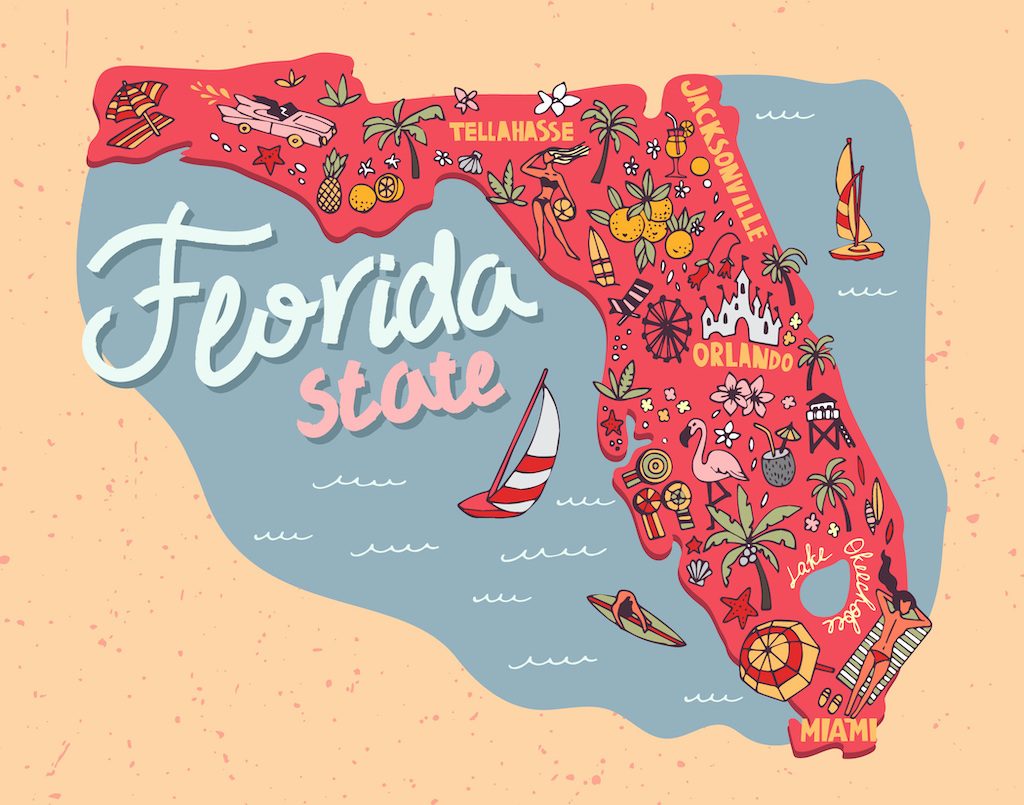Florida Seeing Major Homeowner Insurance Rate Increases

Florida gains about 300,000 new residents every year and 2020 has been no exception, despite the challenges of the pandemic. Unfortunately, many of those new residents, as well as longtime residents of the Sunshine State will be looking at major homeowner insurance rate increases in the coming years.
Florida is on the verge of large premium increases due to the cost of reinsurance, AOB lawsuits and declining competition in the state.
Reinsurance problems coming
Reinsurance is the insurance coverage that insurance companies are required to purchase to guarantee they have the resources to cover clams after a major catastrophe.
The issues with reinsurance started during the 2008 financial crisis. As interest rates plummeted and the stock market nosedived, hedge and pension funds looked for places to stick their money that would pay higher yields and mitigate their risk.
By June 2013, pension funds had dumped $10 billion into investments related to the insurance market which included catastrophe bonds and catastrophe futures. All of this capitol was competing with reinsurance companies which drove down the price of reinsurance, allowing traditional insurers to keep their premiums fairly low. Unfortunately for Florida homeowners, the price of reinsurance has not held steady.
As catastrophic events happened around the world, insurance linked securities began to lose money and as the stock market improved, many of the funds started pulling their money out and putting it back in the stock market. According to a recent Bloomberg article, capitol in the reinsurance market peaked in 2018 with $97 billion, that number has dropped to $91 billion this year.
As capitol dries up and claims skyrocketed due to severe storms hitting the state, the cost of reinsurance headed up.
Reinsurance is not the only contributing factor to expensive homeowners insurance in Florida. The number of catastrophic storms that have hit the state recently and the resulting claim payouts have resulted in many nationwide insurers leaving the state.
“Most of the large national bellwether insurance companies that you see commercials for, that an average American would recognize, don’t write homeowners insurance policies anymore in Florida,” said Garrett Mitchell, director for sales and marketing at Insurance Express, an agency based in West Palm Beach in the Bloomberg article. “When they pulled out between 2004 and 2006, there was a major void in the marketplace.”
Smaller, Florida only insurance companies popped up to fill the void and by 2011 they represented 45 percent of the insurance market. They were lucky in the fact that they got into the market at the beginning of a 10-year stretch that saw zero hurricanes hit the state.
That ended in 2017 when Hurricane Irma hit and resulted in $17.4 billion in claims and spawned the era of assignment of benefits (AOB) claims. AOBs let a homeowner transfer their claim to a third party, usually a contractor or lawyer. This allows the contractor to make decisions about the job and file the claim directly with the insurance company.
The problems started to show up when less than honest contractors started filing inflated claims, which were then denied by the insurer. The contractor would partner with a lawyer who would sue the insurer. In most cases, it was cheaper for the insurer to settle than go to court, but all of those additional expenses would be passed on to homeowners via higher premiums.
After Irma, AOB claims shot up dramatically, according to data from the Insurance Information Institute, there were 153,000 AOB claims in 2018, up from 79,000 in 2013. After years of inaction from the Florida Legislature, a law finally passed in 2019 that put new restrictions on lawsuits. Unfortunately, while AOB lawsuits have dropped, homeowners, instead of contractors are now filing suits.
These lawsuits hit insurance companies around the same time that money was leaving the reinsurance market. The cost of reinsurance soared 15 percent in 2019 and is up 26.1 percent this year according to Hyperion X Analytics.
Insurers Looking for Rate Increases
All of this has led insurers to ask for rate increases. Florida law requires insurers to present their case to state regulators if they want to raise rates more than 15 percent. Dozens of insurers have requested rate increases this year. “We asked for 22%,” said Roger Desjadon, chief executive officer of Edison Insurance, in the Bloomberg article. Their request was approved. “There have been companies that have filed for 30%, 36% increases, and received them,” Desjadon continued.
Competition has declined and Florida home insurance rates are headed up. The total number of policies in the state has risen over the last decade while the number of insurers offering homeowners insurance in the state has dropped which is leading to ever higher homeowner insurance rates in the Sunshine State and many experts are warning that the pain is just getting started.
